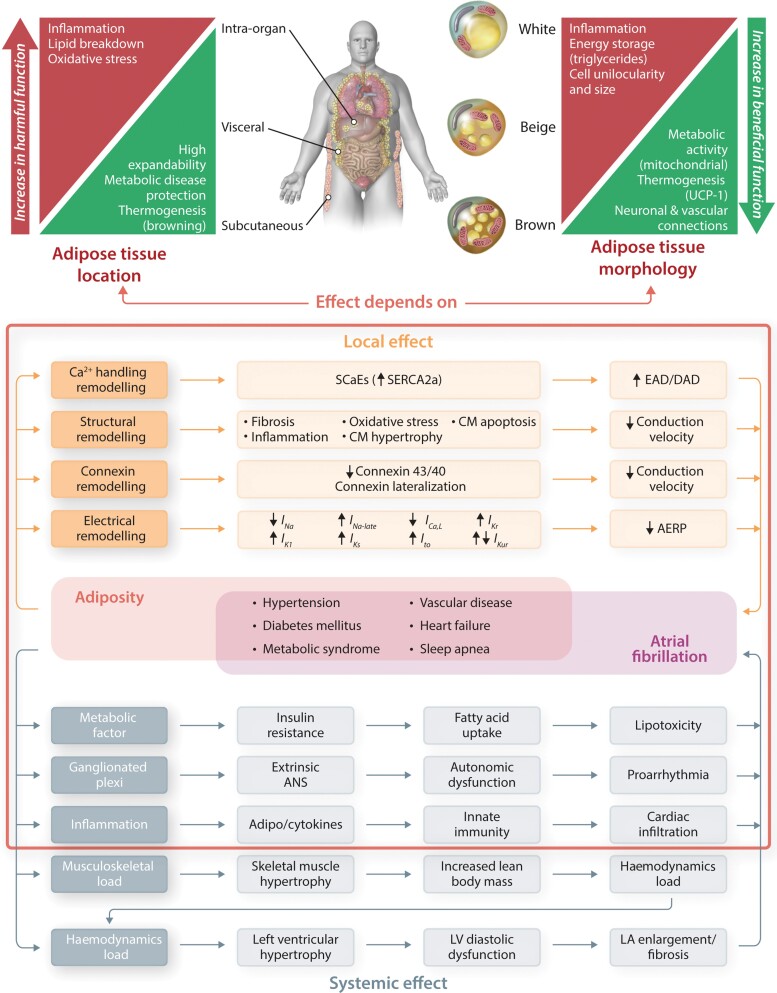Graphical abstract.
Cellular, localization, and functional heterogeneity of adipose tissue.
CM, cardiomyocyte; see Tables 1 and 2.
Visceral and subcutaneous adipose tissue are two main human fat depots that represent different metabolically and proinflammatory profile (upper left panel). Adipocytes are divided into different cell types with distinct morphological and functional characteristics, including white, beige, and brown adipocytes (upper right panel). Pink adipocytes are not discussed in this review, since they mainly occur in pregnancy.
Adiposity together with accompanying obesity-related comorbidities (metabolic syndrome, diabetes, hypertension, heart failure, sleep apnoea) promote atrial fibrillation through systemic effects (bottom left) via haemodynamic, metabolic, neurohormonal, and proinflammatory factors, and through local effects promoting a proarrhythmic atrial cardiomyopathy involving Ca2+ handling, structural, connexin, and electrical remodelling (bottom right).
Depending on location and morphology, adipose tissue might contribute to proarrhythmia by causing local and systemic effects (red frame).

